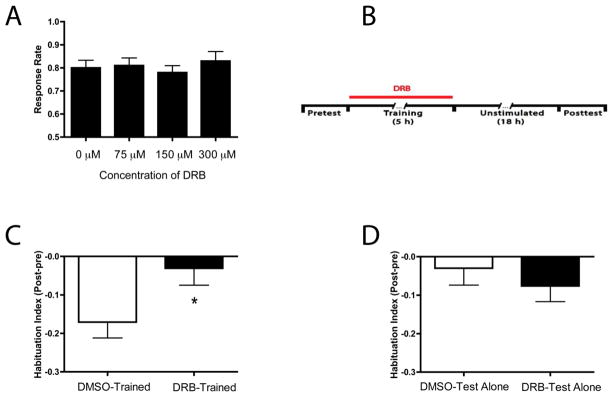Figure 6.
The transcriptional inhibitor DRB blocks LTH. (A) Effect of prolonged exposure to DRB on the baseline responsiveness of zebrafish larvae. The number of C-starts evoked in larvae exposed to DRB (75 μM, 150 μM or 300 μM) did not differ significantly from that in larvae exposed simply to the DMSO vehicle solution (0 μM). (B) Experimental protocol for testing DRB’s effect on LTH. The drug was applied to the individual wells (300 μM concentration) immediately after the end of the Pretest, and the Training/Test Alone period commenced 15 min later. The drug remained in the wells throughout the Training/Test Alone period after which it was washed out of the wells with control (E3) medium. The larvae remained in control medium alone for the remainder of the experiment. (C) Effect of inhibiting transcription on habituation expressed at 18 h posttraining. LTH was blocked in the trained fish treated with DRB (asterisk). (D) Effect of exposure to DRB on the baseline responsiveness of larvae. The DRB treatment did not affect the number of C-starts evoked in the Posttest in untrained larvae, as indicated by the lack of a significant difference in the HI at 18 h between the DMSO-Test Alone and DRB-Test Alone groups.

